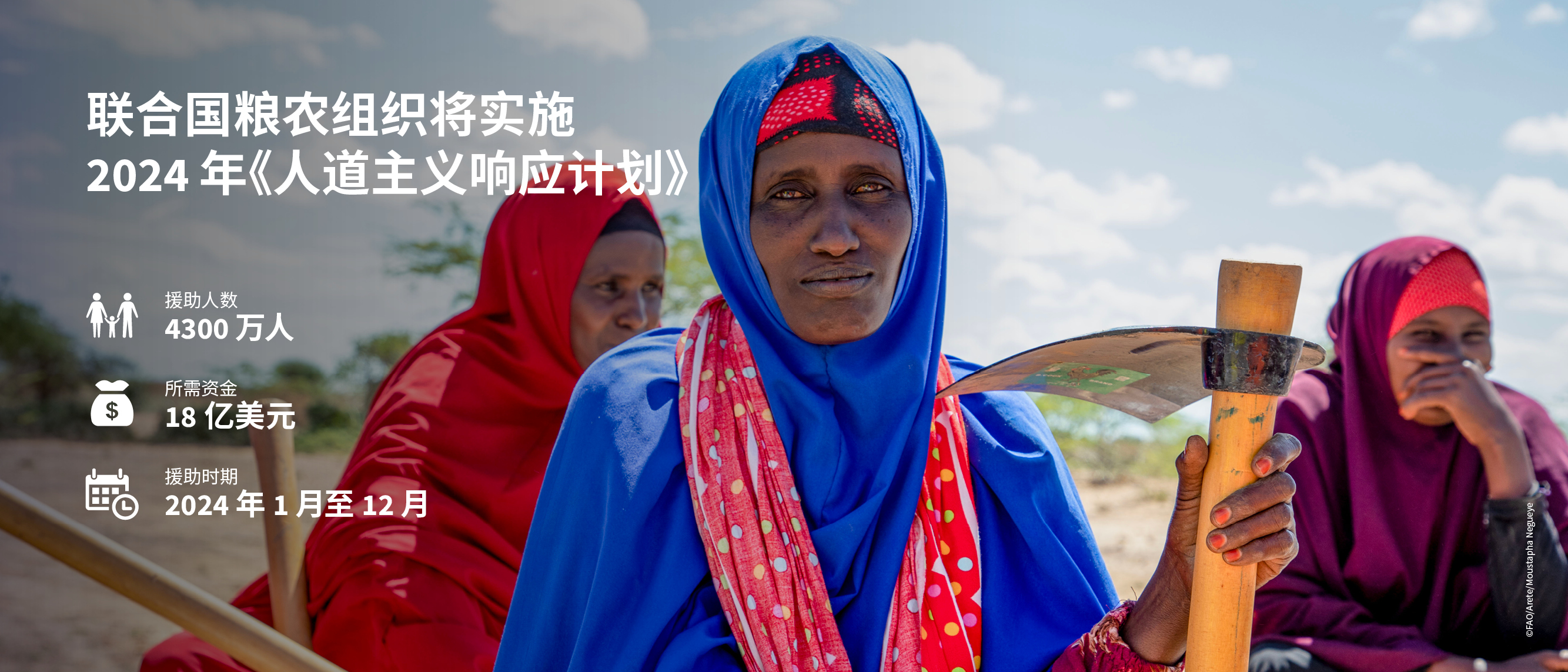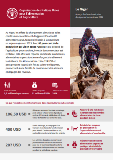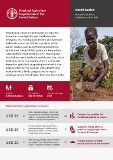

联合国粮农组织将实施2024年《人道主义响应计划》
12/2023
2022年底,《全球粮食危机报告》指出,即便在最高的人道主义响应筹资水平之下,分布在53个国家的10亿待援助对象中仍有四分之一面临突发粮食不安全状况,并创下新高。
2023年,人道主义需求全年居高不下,令人忧心:53个国家2.58亿民众面临突发粮食不安全状况。同时,人道主义预算开始收紧,援助缺口达数百万人。
预期2024年全球粮食危机还将继续。气候危机引发极端天气事件,新冲突暴发,旧冲突加剧,经济不稳定,各项因素交织重叠,不断推高人道主义需求。
人道主义需求高位徘徊,而双边捐助方供资水平可能进一步缩小,这意味着制定2024年《人道主义响应计划》的过程中,必须紧紧围绕最危险人群和最具成本效益的举措,满足其短期内的粮食安全需求。
2024年,在《人道主义响应计划》框架下,联合国粮农组织将筹措总计18亿美元,帮助4300万民众生产粮食。当前,供资水平缩小,提供该资金支持既是在拯救生命,也具有成本效益,捐助方平均每捐助50美元,农户就将生产300美元的粮食。
Mozambique: Humanitarian Needs and Response Plan 2024
03/2024
Mozambique is one of Africa’s most climate-vulnerable countries. In addition to climate shocks, the ongoing conflict in Cabo Delgado is the country’s main driver of food insecurity.

Niger: Humanitarian Needs Overview and Response Plan 2024
02/2024
In 2023, access to food emerged as the most pressing need for people in the Niger, where the impact of climate change and armed conflict continue to drive acute food insecurity.
.tmb-th600x450.jpg?Culture=zh&sfvrsn=f5d3a839_6)
Northeastern Nigeria: Humanitarian Response Plan 2024
04/2024
In 2023, the levels of acute food insecurity in northeastern Nigeria were comparable to those reported during the peak of the crisis in 2016/17.

Somalia: Humanitarian Needs and Response Plan 2024
04/2024
Within the span of a year, Somalia has gone from averting a famine caused by the longest drought in its history to the worst flooding on record.

South Sudan: Humanitarian Needs and Response Plan 2024
03/2024
Humanitarian needs in South Sudan are expected to reach a record high this year. Amid a complex emergency that has displaced millions and destroyed livelihoods, more than half the population will be acutely food insecure during the lean season from April to June.
